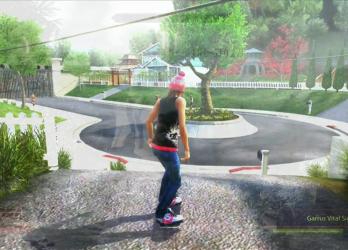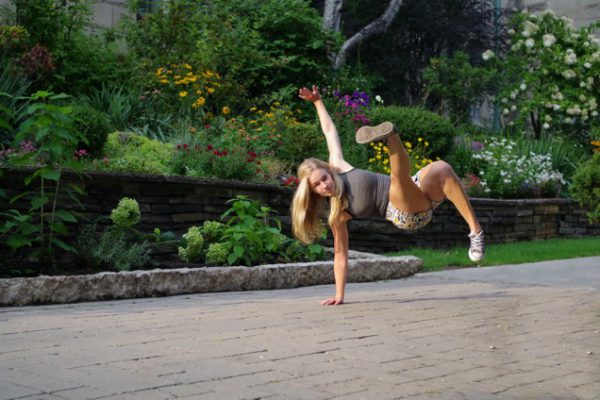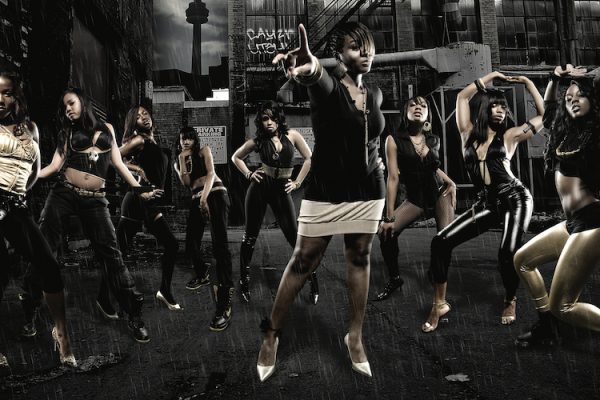People are stoked about playing games and designers are prolific at making them. In the spectacularly popular gaming arena, dance has been marginalized due to its seemingly limited commercial viability, but that is changing.
Today, more and more, dance artists are creating solutions, introducing elements of improvisation and a new form of creativity in this industry. The builders of simulation arts gaming are increasingly applying design techniques and new media tools to dance gaming trends in the creation of gestural games in a post-cinematic culture. These new technological networks were created in response to the desire to support independent and experimental possibilities, and create an active relationship between the audience and the work.
Montréal’s JoDee Allen has become a game designer, familiar with both dance and game terminology, and a key player in evolving game activities and narrative. She is affiliated with the Technoculture, Art and Games (TAG) laboratory, at Concordia University’s interdisciplinary centre for research in game studies, digital culture and interactive art, where she is a graduate student and researcher.
For her thesis, Allen is creating a dance game titled Dance Karaoke, involving the interactive story of a bgirl. In developing this kind of adventure novel, she’s encouraging the user to make choices in creating a dance, and taking specific descriptive language to communicate with the player. The words the user engages with — terms like thrust, slide and Laban-like qualitative indications such as soft and twist — become the choreography. Think of the “how to move” engagement as a performed reading of the script, with the animation of the avatar in synch with what you follow as you dance. “You are reading with your body,’ she says.
Moving into the games sphere was ideal for Allen, one of the founding members of the Solid State Breakdance Collective, once the city’s most celebrated bgirl crew. The women knew something about fighting their way into the aggressive, explosive world of male-dominated breakdance. In its emergence, Solid State was not really a performance group, but rather a fun and safe environment for bgirls. Too often, in this competitive arena, women are pitted against each other in battles, yet the group wasn’t about showdown, but sisterhood. Because of that, the cohorts were a catalyst for a generation of dancers.
Allen is forging ahead in a male-dominated milieu, though recent incidents experienced by gamer designers and writers involving angry cybermob threats and social media abuse might suggest otherwise. Dubbed the GamerGate campaign, last year many women became targets of sexist harassment and persistent death and rape threats. Undaunted, there was backlash against young male “techie” gamers’ “we-were-here-first” rhetoric and systemized rule-driven culture, when over 2,400 industry professionals came together online to denounce the offensive treatment and behaviour toward women. Women in games is a hot topic, but creators like Allen seem more intent on exerting energy to create more inclusive video games.
The TAG lab, for its part, has been bucking the trend for years, associated with “awesome women” like co-founder Lynn Hughes and artist Jane Tingley, says Allen. The centre has been heralded for breaking down barriers between disciplines with an engagement in interdisciplinary collaboration. Anchored in Montréal’s thriving, rapidly changing and dense indie game developer community, TAG gives Allen a platform to hone her innovative research and try to “break away from a mimetic springboard and branch out,” she says, creatively choreographing the player experience. She’s been able to look at the history of dance games, the limitations of the systems, and veer away from the constraints of the “monkey-see, monkey-do” gaming approach in which the player mirrors the dance moves demonstrated by the avatar, and where there’s not much choice. Even though “the movement is modelled from a human body, there’s a flattening that occurs,” Allen says. She’s attempting to re-enliven what we read and put onto our bodies. Filmmaker Marites Carino just started working with Allen on developing an interactive gaming installation project and agrees, “She’s looking at it from a different angle. Gaming developers don’t come at it from a choreographer’s perspective. And JoDee does.”
Allen would like to see more initiatives involving street dancers and the creation of experiences for the field of games that “think strategically about dance, breaking the win/lose dynamic of so much gaming.” The challenge, as she sees it, is for the mechanics of the form to shatter those accepted strategies, that the makers broaden the spectrum with a poetic impetus and bring a more spontaneous response to the field.






